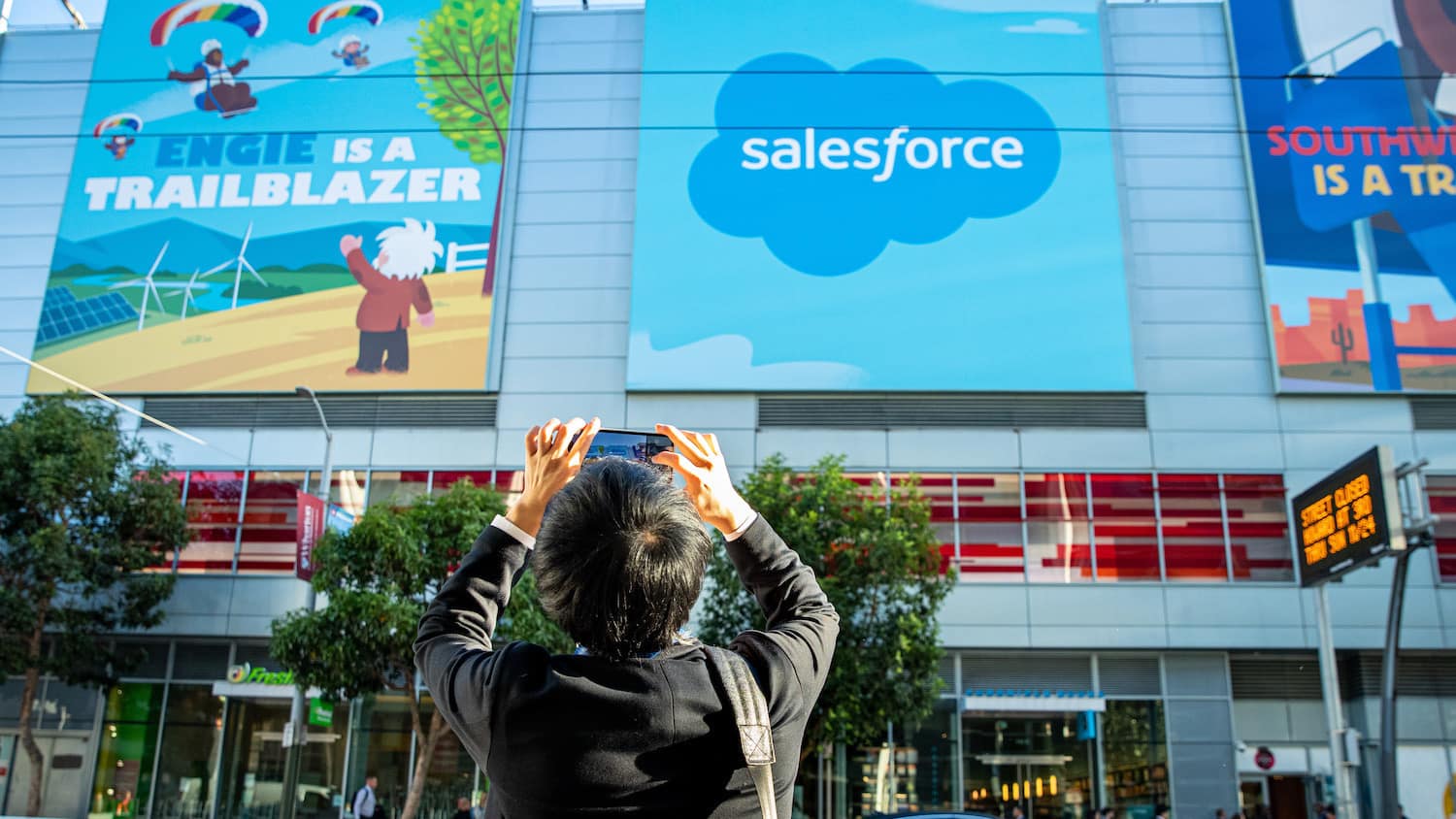


Your phone rings, you don’t hear it because your ringer is off. Ok fine, let’s pretend it was on for a second and you did hear it and you look at the caller ID to make a quick decision about whether to answer. If it’s someone you know, chances are non-zero you’ll pick up. If not, it’s going straight to voicemail.
In my experience, using the phone, and even email, to connect with sales prospects has become less effective because it’s often met with suspicion or viewed as a distraction — not a great place to start a connection. It’s why referral partners have gained in popularity, because the person calling is already a trusted contact.
This article describes the various types of channel partnerships, including referral partners, and how you can start using them to generate sales revenue.
Grow with better partner tools and exceed revenue targets together — with Partner Relationship Management.



A channel partnership is a type of sales model in which a company partners with another company to sell their services or products. In a traditional channel partnership, the partner does the selling for your company and receives a share of the revenue. Other types of partner compensation are a sales commission, a set fee, or discounted and free products.
Channel partnerships are a type of indirect sales, where customers buy a company’s products from an intermediary called a partner. In direct sales, however, a company’s sales team sells directly to customers without the middleman.
For example, a tech company sells a software product directly to customers in the healthcare industry via its website. The tech company also works with hospital consultants, or channel partners. These partners also sell the product for the software company and receive a commission on their sales.
There are multiple types of channel partnerships in sales. You may choose to go all in on one type or use a combination depending on your business’s structure and whether you’re selling a product or a service. For example, if you sell a product and are looking for greater distribution, you may consider partnering with a reseller.
With the rise of technology and more communication options for sales, some types of partnerships have evolved to include new platforms and networks. In my experience, these are the ones that tend to drive more leads and generate the most sales for companies:
A referral partner makes qualified customer introductions to your company. In exchange, they receive compensation for any closed deals. The compensation is typically a commission, or a percentage of the final sale. Referral partners tend to be individuals, rather than organizations, because they are based on personal connections within your network.
A reseller purchases products or services from your company and sells them to its customers through an existing distribution and delivery system, like a brick-and-mortar store or online marketplace. Resellers commonly purchase products from companies at a discounted rate and then resell them at a higher price.
Affiliate partners have a sizable, built-in audience who rely on them for recommendations. The affiliate partner promotes a company’s product or service, usually on its website, blog, or social media, and earns a commission on the sales or leads generated. Sales tracking is normally done through an affiliate link on the partner’s site. Where a referral partner usually knows the person or business they refer you to, an affiliate partner likely does not have the same close, personal connection due to their large audience size.
Ambassador partners endorse a company based on their positive experience with a product or service. The promotion is usually done on social media. In exchange, the ambassador receives compensation in the form of free products or a percentage of sales. An ambassador is similar to a social media influencer but tends to have a long-term relationship with the brand versus a one-off campaign. Unlike an affiliate who tends to be more detached from the product, an ambassador typically uses the product themselves.


Hitting quota remains a challenge for sales professionals, with only 28% expecting to make 100% of their annual quota, according to the latest State of Sales report. Working with channel partners can open you up to new markets and customer segments that you may not have interacted with previously. For one, you can achieve more coverage and market share. You can also gain reach through reputable partners that have experience with your business and an established network of connections.
Here are some other sales benefits of channel partnerships:
We’re building the largest and most successful community of sales professionals, so you can learn, connect, and grow.

In my experience, it’s best not to overcomplicate finding channel partnerships — use your network and ask for recommendations. Before bringing on any new partner, do a thorough evaluation of them and their business to ensure they’re the right fit for your sales organization. For example, does their approach to sales align with your business model? Look at their customer reviews and testimonials, work culture, business goals, or other factors to determine this. See if they can fill the gaps you have on your own sales team, such as growing a certain territory or category of business.
Here are a few of the best ways to find channel partnerships:
Growing a network of potential channel partners should be a daily practice for sales teams. I think that LinkedIn is one of the best places to seek out partners, and I suggest planning to send about 15 new LinkedIn connection requests per day. Look for connections who align with your industry or a related industry, and those who are in your ideal geographic location and have specific skills or expertise with your product. Use the LinkedIn search function to filter and narrow your list even further.
Look at your existing connections. Who are their first and second connections? Try reaching out to them as a simple way to make new contacts. For example, if you’re looking to expand into another customer segment, see what connections you have who currently work within that segment and reach out to see if they can connect you with someone. Avoid going straight in with a sales pitch — it’s too forward an approach and could turn people off. Instead, start by asking about their relationship with the connection to determine how well they know them, learn more about them, and go from there.
Using social discovery and networking on platforms other than just LinkedIn can also help you build channel partner relationships. Industry-specific directories, for example, offer a curated list of potential collaborators. It’s common for industry associations to make their member directories available and searchable online. And while many of these platforms are paid solutions, it can be a good investment because they provide access to critical information — relationship and investor data — and make it easier to identify the best potential partners. Because they typically screen candidates before accepting them, you can expect to find more qualified partners this way. Ask others in your industry to recommend platforms they’ve found to be most effective.
Word of mouth can go a long way. Don’t limit your prospecting to LinkedIn or other networking platforms — ask your personal connections. In my experience, someone you already know always knows someone else who could be a potential partner, such as a next-door neighbor, family member, or someone in another department at your company. After you’ve researched potential partners on LinkedIn and other networks, make a partner prospect list. Send it to your company’s board, venture capitalists, and advisors to see if there’s anyone on there they can introduce you to. Get to know your employees across departments, not just sales; they can also be a goldmine for finding potential partners — all you have to do is ask.
Once you’ve nailed down your channel partnerships, it’s time to nurture, manage, and optimize them for the long term. The key here is to provide opportunities for mutual growth and success for your and your partners’ businesses. Create an agreed-upon sales plan that includes quotas, key performance indicators (KPIs), and commissions. All these activities can be done at scale with your CRM.
Set the right tone from the start by creating a welcoming and supportive environment for partners. Set them up for success by familiarizing them with your sales processes and materials, product demos, and preferred communication methods.
Here are a couple of other steps you should take when working with channel partners:
Channel partnerships are a smart way to expand your sales efforts and increase efficiencies for your sales organization. You may be able to find the right partners within your existing network of professional and personal connections. Or you may need to spend some extra time prospecting and inviting new people into your partnership ecosystem. Once you’ve built your network, maintain, incentivize, and motivate your partners for mutual and lasting success. Soon you’ll be on your way to long-term, revenue-generating relationships that give your sales organization a competitive advantage.
See how to give partners clear onboarding goals and automated business insights to grow faster, together.











Scott Leese is the founder of Scott Leese Consulting. Armed with years of industry experience - and a proven track record of success - he focuses on a scalable approach to sales strategies, processes, people, and infrastructure. Scott is also a co-founder of Surf and Sales, a sales summit held in . Read More Costa Rica. He an author and a 3X American Association of Inside Sales Professionals Top 25 Award Winner.









 Two businesspeople ride on a yellow rollercoaster that is moving upward. The rollercoaster is carrying dollar signs." />
Two businesspeople ride on a yellow rollercoaster that is moving upward. The rollercoaster is carrying dollar signs." />





Get the latest articles in your inbox.